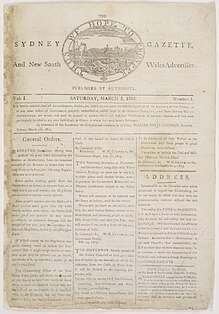Related Research Articles

The Hartford Courant is the largest daily newspaper in the U.S. state of Connecticut, and is considered to be the oldest continuously published newspaper in the United States. A morning newspaper serving most of the state north of New Haven and east of Waterbury, its headquarters on Broad Street in Hartford, Connecticut is a short walk from the state capitol. It reports regional news with a chain of bureaus in smaller cities and a series of local editions. It also operates CTNow, a free local weekly newspaper and website.

The Press and Journal is a daily regional newspaper serving northern and highland Scotland including the cities of Aberdeen and Inverness. Established in 1747, it is Scotland's oldest daily newspaper, and one of the longest-running newspapers in the world.

The Newport Daily News is a six-day daily newspaper serving Newport County, Rhode Island. It publishes in the mornings on weekdays and in the morning on Saturdays. The Daily News was the state's largest family-owned newspaper until it was purchased by Gatehouse Media in 2017.
The Journal is a daily newspaper produced in Newcastle upon Tyne. Published by ncjMedia,, The Journal is produced every weekday and Saturday morning and is complemented by its sister publications the Evening Chronicle and the Sunday Sun.

The Boston Gazette (1719–1798) was a newspaper published in Boston, in the British North American colonies. It was a weekly newspaper established by William Brooker, who was just appointed Postmaster of Boston, with its first issue released on December 21, 1719. The Boston Gazette is widely considered the most influential newspaper in early American history, especially in the years leading up to and into the American Revolution. In 1741 the Boston Gazette incorporated the New-England Weekly Journal, founded by Samuel Kneeland, and became the Boston-Gazette, or New-England Weekly Journal. Contributors included: Samuel Adams, Paul Revere, Phyllis Wheatley.
Berrow's Worcester Journal is a weekly freesheet tabloid newspaper, based in Worcester, England. Owned by Newsquest, the newspaper is delivered across central and southern Worcestershire county.
The Evening Chronicle, now referred to in print as The Chronicle, is a daily newspaper produced in Newcastle upon Tyne covering North regional news, but primarily focused on Newcastle upon Tyne and surrounding area. The Evening Chronicle is published by ncjMedia, a division of Reach plc. It has a circulation of 26,811 as of 2016, down −12.3% year on year.

The Sydney Gazette and New South Wales Advertiser was the first newspaper printed in Australia, running from 5 March 1803 until 20 October 1842. It was a semi-official publication of the government of New South Wales, authorised by Governor King and printed by George Howe. On 14 October 1824, under the editorship of Robert Howe, it ceased to be censored by the colonial government.

The Boston News-Letter, first published on April 24, 1704, is regarded as the first continuously published newspaper in the colony of Massachusetts. It was heavily subsidized by the British government, with a limited circulation. All copies were approved by the Royal governor before publication. The colonies’ first newspaper was Publick Occurrences Both Forreign and Domestick, which published its first and only issue on September 25, 1690. The Weekly Jamaica Courant followed in Kingston, Jamaica from 1718. In 1726 the Boston Gazette began publishing with Bartholomew Green, Jr., as printer.
Charles Cordell was an English Roman Catholic priest.
The Kentish Gazette is a weekly newspaper serving the city of Canterbury, Kent. It is owned by the KM Group and is published on Thursdays. It's Canterbury and Whitstable editions are the only local papers covering that area.
The Norwich Post was an English provincial newspaper which existed between 1701 and 1713. It is believed to be the earliest truly provincial English newspaper, although the London Gazette was briefly published in Oxford in 1665.
The Newcastle Journal can refer to two newspapers published in Newcastle upon Tyne:

Early American publishers and printers played a central role in the social, religious, political and commercial developments in colonial America, before, during and after the American Revolution. Printing and publishing in the 17th and 18th centuries among the Thirteen Colonies of British North America first emerged as a result of religious enthusiasm and the need for bibles and other religious literature. By the mid 18th century printing took on new proportions with the newspapers that began to emerge, most notably in Boston. When the British Crown began imposing new taxes, many of these newspapers became highly critical and outspoken about the British colonial government, which was widely considered unfair among the colonists.
References
- ↑ Roy McKeen Wiles (1965). Freshest advices: early provincial newspapers in England (PDF). Ohio State University Press. p. 33. Retrieved 9 January 2013.
- ↑ Newcastle Journal, 15 July 1739. Cited in Roy McKeen Wiles (1965). Freshest advices: early provincial newspapers in England (PDF). Ohio State University Press. p. 97. Retrieved 9 January 2013.
- 1 2 Bob Harris (2012). Politics and the Rise of the Press: Britain and France 1620-1800. Taylor & Francis. p. 13. ISBN 978-0-415-12273-3 . Retrieved 9 January 2013.
- ↑ William Speck (1986). "Politics and the Press". In Michael Harris; Alan John Lee (eds.). The Press in English Society from the Seventeenth to Nineteenth Centuries. Associated University Presse. pp. 61–3. ISBN 978-0-8386-3272-7 . Retrieved 9 January 2013.
- ↑ Jeremy Black (2004). Parliament and Foreign Policy in the Eighteenth Century. Cambridge University Press. p. 152. ISBN 978-0-521-83331-8 . Retrieved 9 January 2013.
- ↑ David Hume Bibliography. Accessed 9 January 2013.
- ↑ "Slack, Thomas [pseud. S. Thomas]". Oxford Dictionary of National Biography (online ed.). Oxford University Press. doi:10.1093/ref:odnb/64284.(Subscription or UK public library membership required.)
- ↑ Trade and manufactures, Historical Account of Newcastle-upon-Tyne: Including the Borough of Gateshead (1827), pp. 715-730. Online version accessed 9 January 2013.
- ↑ Local Studies Library User Guide No. 3: Local Newspapers. Accessed 9 January 2013.